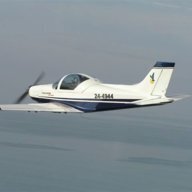Obviously you aren't going to be carrying even one jerry can in the Pioneer. We carry a collapsible 20 litre container and sometimes need more than one trip to top up when required. We have never had a problem getting fuel and never had bad fuel and we have never experienced the animosity HITC was alluding to in any out of the way places. Actually it has always been totally the opposite, but we do plan ahead and contact every place where we will be landing.
For us, we normally fly with full tanks. I take a small bag for two weeks away (3kg) and my wife goes overboard at an excessive 4kg. That leaves plenty spare for cameras, extra oil, water, tools, first aid, emergency supplies, cover and tie downs. We have never had an overheating problem but we do push the climb to get the oil temp over 100 degrees to remove moisture. Once enroute I normally just climb at 500 fpm. What extra fuel you burn climbing you save at the other end when you come back down.
To be honest, I've not noticed any real difference in fuel burn with extra weight. We burn 18-20 litres per hour regardless and would average 130+ cruise at that rate. Depending on conditions the cruise may drop to 120 or might be above 140.
Landing fees? Well that's just part of the cost of flying. Most small places don't charge, some do. In the scheme of things it's not a great amount normally and often it's an honour system.


